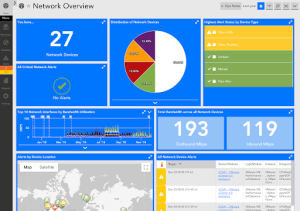If you’ve got a track record of success in managing operations, you may want to consider becoming a Middle Market Lending Manager. position typically requires three years or more of management experience. It requires the ability to resolve escalated issues within operations and coordinate with other departments. You should also have experience in sales and marketing.
Lower middle market firms
As valuations in the upper middle market continue to rise, the lower is becoming increasingly attractive for investors. These firms tend to have better growth potential and can be acquired at lower valuations. With increased competition, these firms also tend to receive more offers. However, acquiring a lower middle market company may take more work and effort than buying a larger firm in the middle market.
The current economic environment allows smaller middle market firms to take advantage of multiple funding sources, can help them accelerate growth and profitability. While smaller firms are less appealing to larger companies, they do have the potential to experience value-enhancing operational improvements. For example, in the healthcare services sector, there is a huge consolidation play in the area, as well as opportunities in vertical software and industrial technology. In addition, many lower firms have turned to specialization in order to become unique sellers.
Although sales growth has slowed in recent years, the market remains favorable for lower middle market firms. GF Data reports that there have been more than fifteen lower middle market deals in the second quarter of 2009. The number of deals is still far below the record-setting levels seen in 2006 and the first half of 2007.
Mezzanine debt
Mezzanine debt is a form of leveraged private equity finance and is a critical component of the financial structure for middle-market companies. These companies usually outgrow their existing capital sources and need access to additional capital. Typically, mezzanine debt matures in three to five years.
Unlike senior secured debt, mezzanine debt offers more attractive terms. Investors typically get high current coupons and commitment and arrangement fees, along with a call protection feature. They may also get an equity kicker. As a result, mezzanine debt can be highly profitable.
The majority of businesses in the United States are middle-market companies. They generate approximately 33% of the total private sector GDP and support 48 million jobs. That’s more than enough middle-market companies to be the fifth largest economy in the world. According to the 2012 U.S. Census Bureau, there were 41. Of these, about 1,450 were larger than $1 billion.
Mezzanine debt providers are usually more flexible than senior lenders because they can tailor their loans to a company’s specific needs. These investments typically require no readily marketable collateral and offer a higher rate of return. They also tend to be more equity-oriented than senior lenders.
Bank debt
There is limited evidence that banks are able to successfully replace borrowers in the middle market. Most middle market firms have only one credit line with a single lender. Most of these lenders are in-state banks. Despite this, about 4.55 percent of firms have switched lenders or destroyed their existing credit line and have started a search for new lenders.
In addition, businesses tend to have higher debt costs than larger businesses. The reason is that they often have less free cash flow and are subject to higher interest rates. This makes them less attractive compared to larger businesses, which enjoy economies of scale. Moreover, because most of their debt is unsecured, middle market businesses have limited recourse to debt hedging.
As a result, many middle-market companies are expected to need significant refinancing capital to meet their debt payments. Furthermore, due to the impending maturity wall, European firms may find it difficult to raise additional capital. While European banks have limited lending capacity, a large portion of their middle market debt is due to mature between 2020 and 2027.
Private equity
Middle market deals are typically smaller than mega-fund deals, but account for a significant amount of deal activity. They account for 50-60% of all PE deals, and more than 50% of total fundraising. The middle market is split into two distinct sectors: lower middle market (LMM) and upper middle market (UMM). There is no universally accepted cut-off point for the size of the middle market, but firms typically aim to invest in businesses with revenues between PS5 million and PS300 million.
Companies in the lower often have lower valuations and less competition for investment capital. However, they are often able to make value-enhancing operational improvements that will accelerate growth and profitability. One recent example involves Incline, which invested in Revolution but left the management team in place. Rather than tearing the company apart and selling its subsidiaries, Incline made investments that benefited the business for the long term. This strategy is typical of lower middle market equity firms.
While middle market private equity firms are currently enjoying a supercycle of growth, risks are also growing. As a result, managers are keeping a close eye on macroeconomic conditions and valuations. Despite this, they remain optimistic about the future. In addition, they must ensure they have solid value creation plans, sector expertise, and ability to source deals.
Boutique investment banks
Boutique investment banks specialize in working with companies in the middle market. These banks can be regional in nature or specialize in one specific industry. For example, a Texas-based firm might work exclusively with clients in the oil and gas industry. While these firms may be smaller in scale than the bulge bracket investment banks, they have deep connections and an excellent reputation in the industry. They are also a great choice for deals with private equity clients.
Middle market investment banks usually focus on organizations with revenues between $5 million and $500 million. They may also offer other services like commercial banking. However, they do not typically provide M&A transaction advisory services. Most of them also do not have a large balance sheet or have any significant capital markets expertise. While choosing a bank to work with, business owners should consider the size of the institution, the depth of industry knowledge, and the experience of dealmakers.
A boutique investment bank will not offer full-service investment banking. They will focus on one or two investment banking services. For example, a boutique investment bank that specializes in corporate finance may focus on mergers and acquisitions, capital raising, and restructuring. In addition, boutique investment banks may have limited geographic regions and offices.
Competitive advantage
Competitive advantage refers to an organization’s ability to provide a higher value proposition to its customers. Porter’s concepts were initially developed to address the issue of comparative advantage. Countries with a strong comparative advantage engage in primary sector production with low wages and little wealth generation. Their products are standardized, and they are priced fairly. As a result, they can reduce their costs by reducing the amount of time needed to manufacture them.
Competitive advantage can be quantified as an added value or economic rent, and it is a key element For example, an airline’s relationship with its fuel suppliers gives it a long-term competitive advantage. Another example is a company’s intellectual property. These rights prevent other companies from copying its products or processes. This can block direct competition for as long as the rights exist.
As competition has become more intense, firms are seeking new ways to increase their returns and competitive advantage. Often, this means turning to the lower middle market. One of the most prominent examples of this is the air conditioning and ventilation industry, which has seen a flurry of private equity activity in recent years. Apax Funds, for example, has acquired a wide range of middle market HVAC companies.






